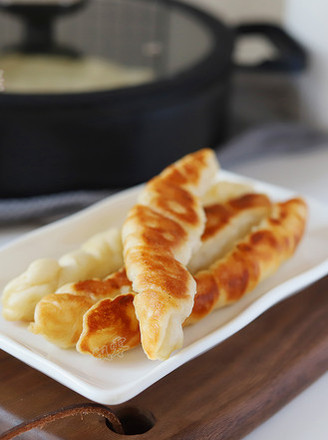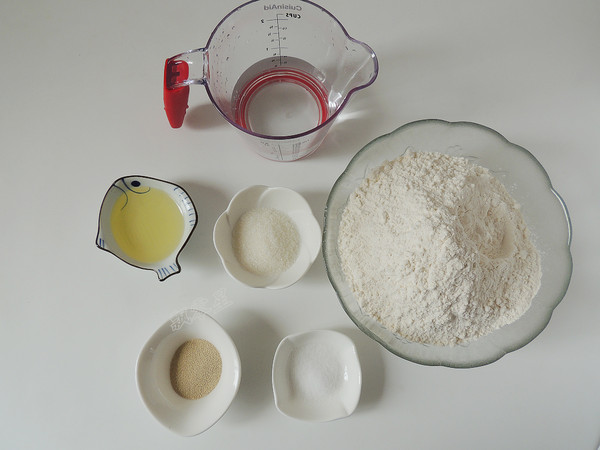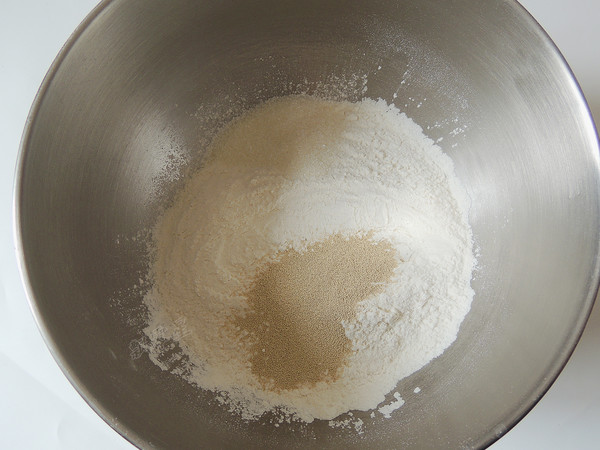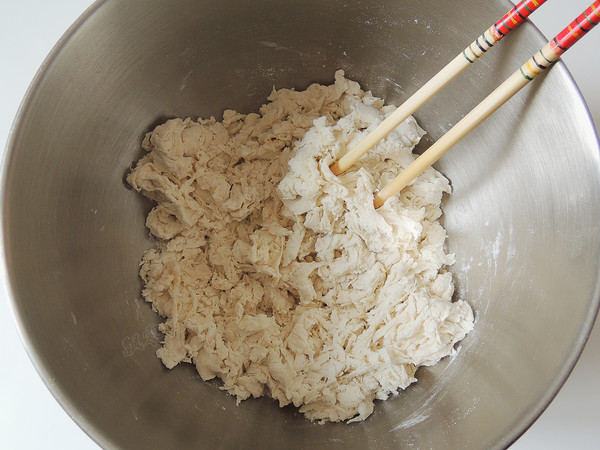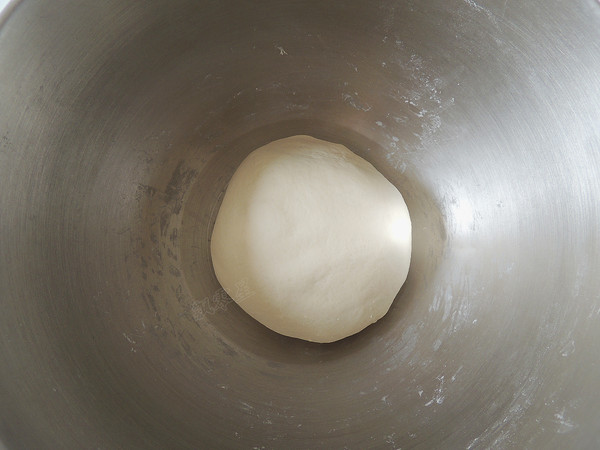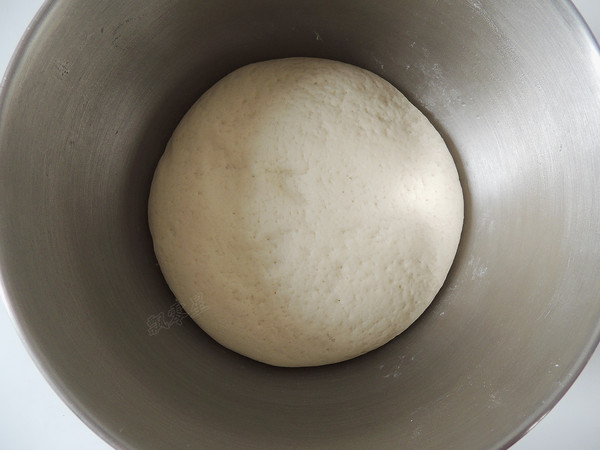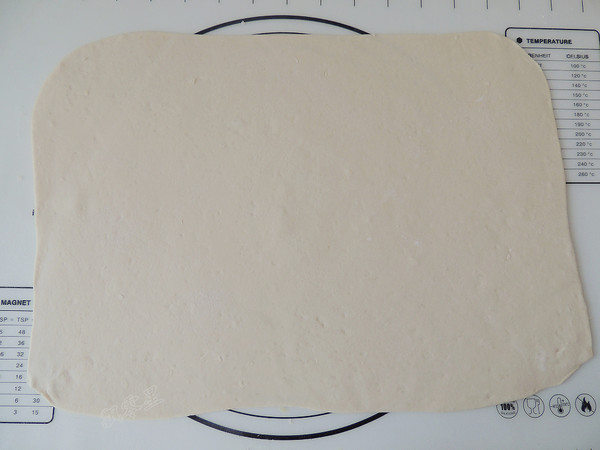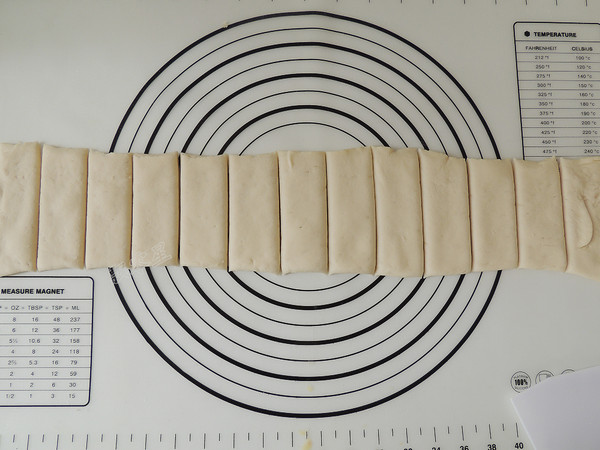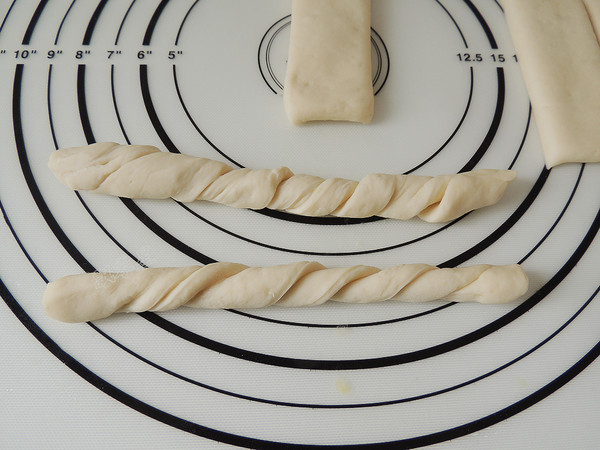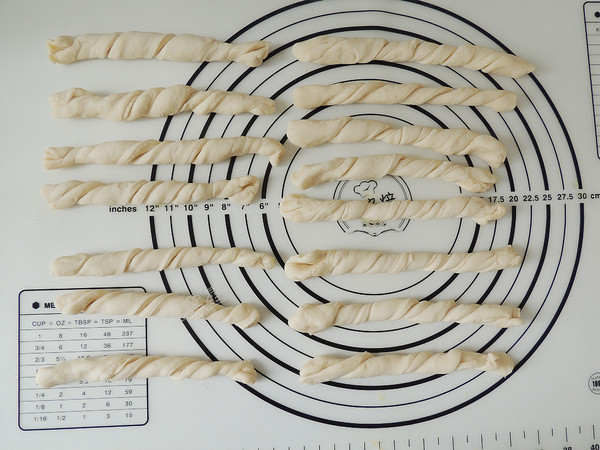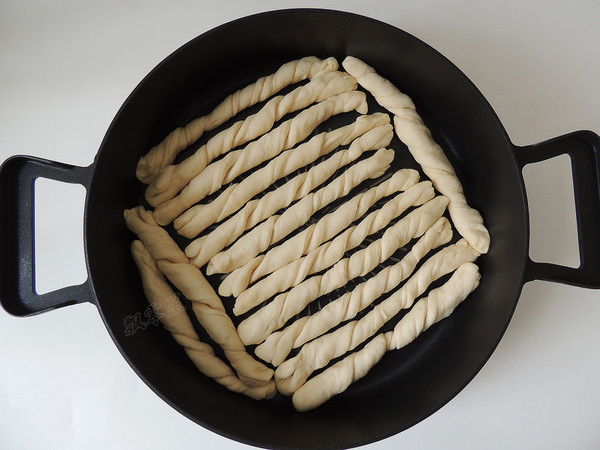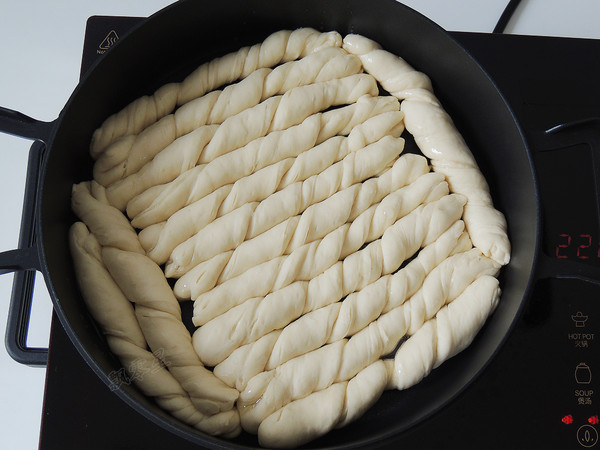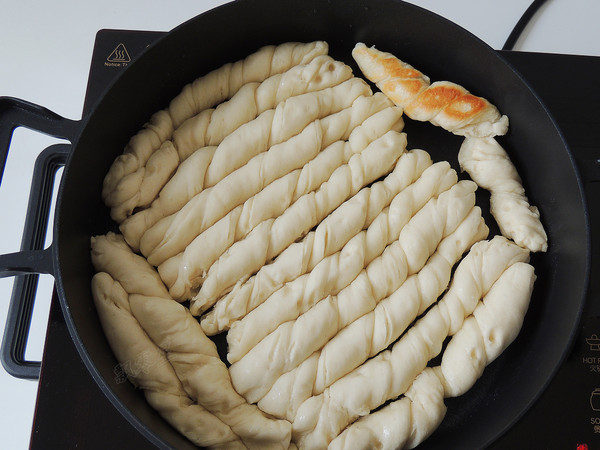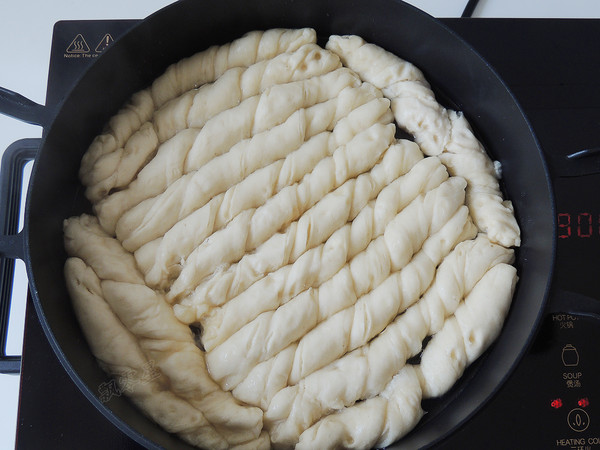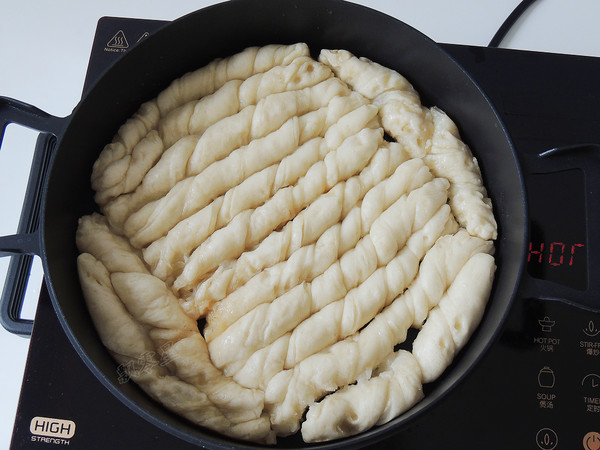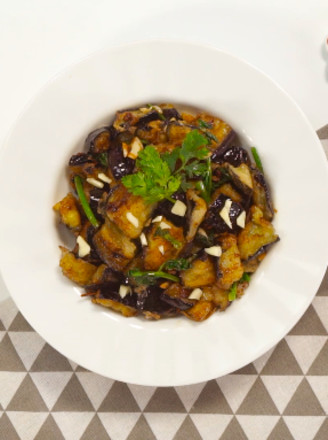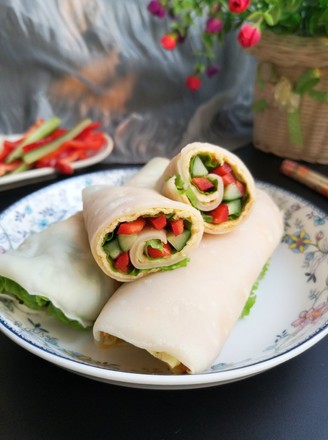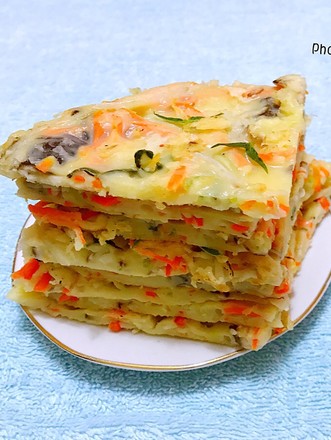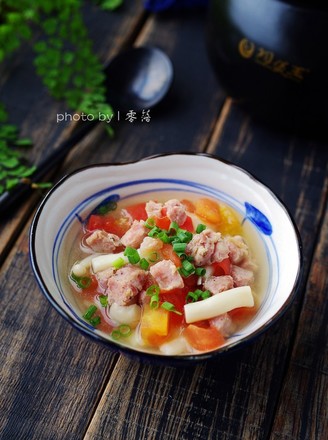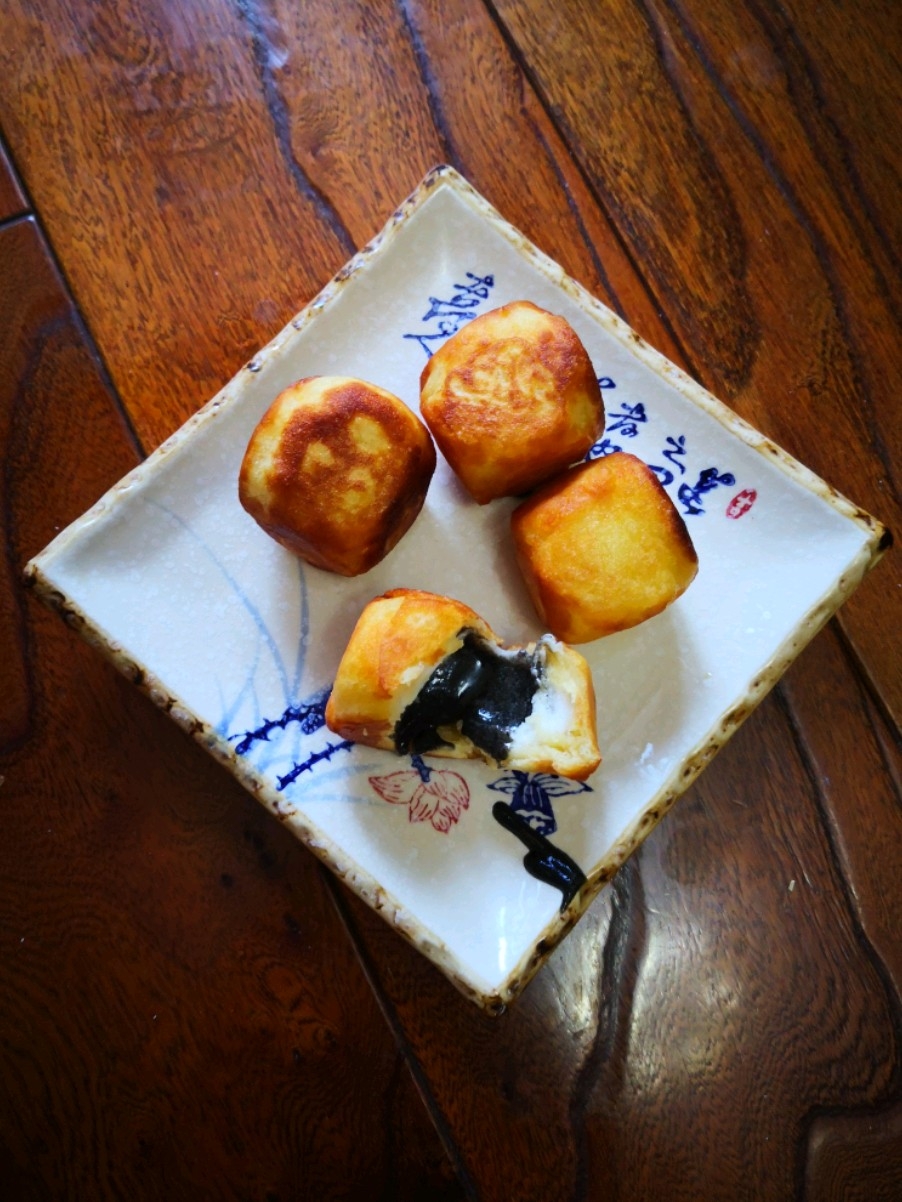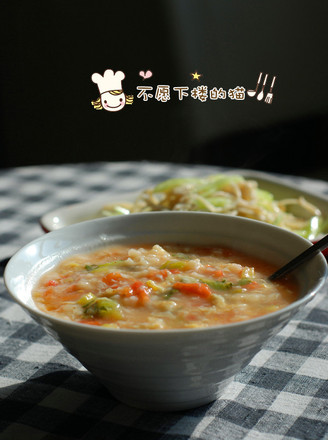Raw Omelet
1.
Prepare all the ingredients.
2.
Pour all the flour, caster sugar and dry yeast powder into the bowl.
3.
Add clean water, stir with chopsticks while pouring the water, it becomes a flocculent invisible dry flour.
4.
Knead into a smooth and soft dough, cover it with plastic wrap or damp cloth for basic fermentation.
5.
Ferment the dough to twice its size, dip your fingers in the flour and poke into the dough. After you take out your fingers, the dough does not shrink or collapse, indicating that the fermentation is complete.
6.
Pour the fermented dough onto the kneading mat, sprinkle some dry flour, and knead well.
7.
Then use a rolling pin to roll out the dough into a rectangular sheet of uniform thickness.
8.
Apply a thin layer of salad oil on the surface of the dough with an oil brush, and then evenly sprinkle some fine salt. You can also sprinkle some five-spice powder, salt and pepper powder or chopped green onion according to personal taste.
9.
Fold the upper third of the dough sheet down, and then fold the lower third up.
10.
Divide the folded noodles into equal pieces with a spatula. I cut fifteen pieces in total.
11.
Take a small noodle block, stretch it slightly, pinch the two heads and twist them together.
12.
Follow the above steps to shape all the small noodles in sequence.
13.
Place them neatly in a non-stick frying pan, leaving a little space between each to facilitate fermentation. Then cover the pot and carry out the second fermentation.
14.
Ferment to double the size, gently press the dough, it can slowly rebound.
15.
After the fermentation is complete, you can start frying. Pour some salad oil along the side of the pot. Keep the heat low, fry the bottom of the Hanamaki until it turns slightly yellow.
16.
Pour an appropriate amount of water along the side of the pot, not too much, and it should be less than one-third of the Hanamaki. When pouring water, try not to pour it on the dough, which will make the dough wet and sticky, which will affect the taste.
17.
Cover the pot, keep it on medium heat, and simmer until the moisture is dry. It is almost done. Pressing the surface can rebound quickly to show that it is cooked through. Open the lid. If the bottom is not golden enough, you can add a little oil and fry for 1 minute to make it crispier.
Tips:
1. When frying the rolls, be sure to control the heat, simmering on medium heat, frying on low heat, not high heat, otherwise the bottom is easy to burn and the upper part is not cooked.
2. I use a 24 cm frying pan, 200g of dough is just right to make a pot, just enough for a family's breakfast staple.
3. If you like to eat sweet, you can change the salt to sugar, the child likes to eat it more.

